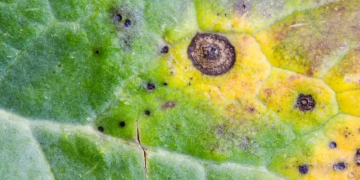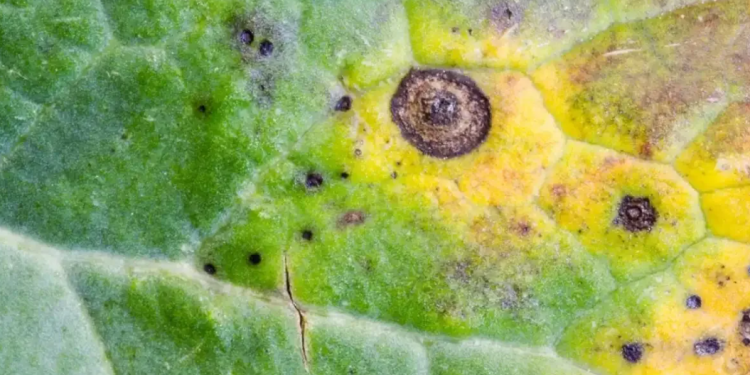#AlternariaLeafSpot #AlternariaBrassicae #PlantDisease #BrassicaCrops #FungalGrowth #CropProductivity #FungicideApplication #IntegratedApproach #Sustainability #AgriculturalIndustry
Alternaria leaf spot is a plant disease caused by the fungus Alternaria brassicae, which affects various brassica crops, including cauliflower, broccoli, and cabbage. The disease can cause severe economic losses in the agricultural industry, and its management is essential to maintain crop productivity and quality.
Symptoms of Alternaria leaf spot usually appear as small, circular, or irregular-shaped spots on the leaves, which can be gray, brown, or black in color. As the disease progresses, the spots can enlarge and merge, leading to leaf blight and premature leaf drop. In severe cases, the disease can also affect other parts of the plant, including the stem, flowers, and pods, leading to reduced yield and quality.
The development of Alternaria leaf spot is favored by warm and humid conditions, which promote fungal growth and spore production. The fungus can survive in crop debris and soil, and its spores can spread through wind, water, and infected plant material. Management of the disease involves a combination of cultural, chemical, and biological measures, including crop rotation, sanitation, fungicide application, and use of resistant cultivars.
The consequences of Alternaria leaf spot can be devastating for farmers and the agricultural industry. The disease can reduce yield, quality, and marketability of brassica crops, leading to significant economic losses. In addition, the use of fungicides to control the disease can increase production costs and have negative environmental impacts. Therefore, a holistic and integrated approach to disease management is necessary to minimize the impact of Alternaria leaf spot on crop production and sustainability.































